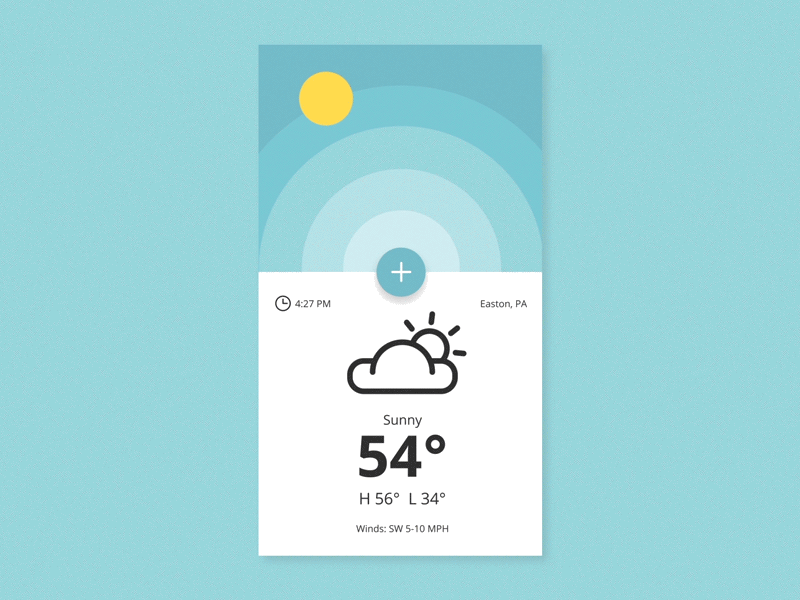Wow! The new client project has landed and you will be the lead designer! Great, everybody has to do your biddings. Gnaar! Thats wrong, dude!

Photo by: Nik MacMillan
I believe that every project and teamwork will push you more into the character of an altruist. Designing a digital product with your ego creates a product that is unauthentic, not focused, does not stick to the clients company and especially not to the user. Being more focused to your users, clients, your team and the whole audience of the digital product will create a better design at all.
What is altruism?
The International Encyclopedia of the Social Sciences defines psychological altruism as “a motivational state with the goal of increasing another’s welfare.” Psychological altruism is contrasted with psychological egoism, which refers to the motivation to increase one’s own welfare.
(Source: Wikipedia)
Me, myself and I
It is not about who designed which screens, who is the lead designer or which person had presented the project to the client. It is teamwork. Everybody is talking about “There is no I in the word team” but just a few people are living this credo.
If you have a look to the design platform Dribbble, you will see so much of fictive weather apps, chat apps, redesigns of Facebook, Whatsapp, Uber, Nike and all the big players around the world. In my opinion it is not because all these brands has atrocious digital products out there or to pushing the own designers skills to a next level. — In my view they are doing it for just for one reason: Likes, Ego Push and Social Fame.

Weather App Concept №98.76543 Source: Dribbble
Being a good designer means, put yourself into the situation of another person as I wrote in “Why Every Designer Should Do Side Projects”. That is probably the first step of losing your ego.
1. First of all: Design ≠ Art
User Interface & User Experience Design is a problem-solving-discipline with a clear focus on users, target groups and KPIs. While Art creates emotions, moods and discussions. UI & UX Design is driven by roadmaps, agile processes or strategic approaches. All this is based on parameters like costs, activites, processes, human resources and stuff like this. It has to fit into the client‘s brand values, legal, social, political, environmental, safeties and economic constraints. While Art do not have to.

UI & UX Design is an problem-solving-discipline. Not Art.
2. Know your skills
After some projects in digital business, you will know what your positive characteristics are. For example: You are really good in Typography. Being specialized into some issues is perfect. This business is so complex today, nobody can know everything and do everything on the same perfect level. So if somebody says he or she is an allrounder, means: Everything and nothing is perfectly done.
3. Know your weaknesses
As I sad: nobody is perfect. — And that is perfect. There are some critical points in your skillset. Know them and communicate these to your team. Try to fix them. Watch tutorials, go some extra miles and read books or medium articles about your skills which are not the best in your portfolio. But the important thing is: know and communicate these “not-so-well-skills”, because someone in your team will assume these tasks, hopefully. And as soon as you are fixed your skill gaps you can help somebody else out.
4. Know your speed of working
Giving a realistic time assessment of the workload which is pending is a base of professional teamwork. Nothing is more unprofessional as a wrong time assessment, because this will f**k up the whole work, motivation and spirit in the team. Do not be shy, if you know that some tasks will takes more time more than you will confess. If your team mates do not accept your assessment: argument why do you need more time than they expected, they will understand you, for sure.
5. Know the skills of your team mates
If you know the skillset of your team members it is so much easier to plan projects. So you can spread out all tasks to the guys who are very good in there topic. — Being a good team mate means being a good designer and being a good designer means being a good team mate. It is important to know that everybody has to rely to the other.
6. Remember your audience
You have to understand for what and especially for who are you designing. It is not about your digital product. — It is about theirs. You are suppose to understand the business and the users needs. What ever you will create, it has to be fit to your audience. — In every single pixel.
7. Check every perspective
User Interface and User Experience Design is not a One-Man-Show. You have to take care of everybody, who will get in touch with the digital product. You have to understand Stakeholders, Developers, Product Mangers as well as Users, Business Analysts and Clients.
